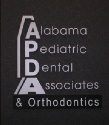 Haven't you seen those commercials with the eyeglasses you can basically bend and wad up, then they spring back to their original shape? What is the material they are made of? It's called NiTi or Nickel Titanium Alloy. It's kind of a weird metal alloy that likes to retain it's shape even after deformation. This has been a boon for orthodintics.
Haven't you seen those commercials with the eyeglasses you can basically bend and wad up, then they spring back to their original shape? What is the material they are made of? It's called NiTi or Nickel Titanium Alloy. It's kind of a weird metal alloy that likes to retain it's shape even after deformation. This has been a boon for orthodintics.Think about it. If you have a straight wire, make it "crooked" or otherwise deform or bend it to the shape of your not so straight teeth, then the wire wants to be stright again slowly moving back to it's original position bringing the teeth along for the ride. That is slow constant pressure over time. That's what moves teeth.*
There is even a varient that is soft when cold. It's limp like wet spaghetti when cold. It is then easily placed on the teeth. As the material warms up in the mouth, it wants to be in it's original position. Weird Science!
More NITi info here from 3mUnitek.
*And more braces info here: When is the best time to start Braces?.











2 comments:
There are different measurements of the physical property of wires: maleability, tensile strength, ductility, etc. Basically, if you apply a force to deflect the wire, you want the force to be as linear as possible so the force will act over time with as precictable a force level as possible (not too soft and not too forceful).
Stainless steel wires (ordinary wires)are used a lot in orthodontics. The more you deflect the SS wire, the more force the wire applies to the tooth. A NiTi wire does the same thing, but the force is lower and more constant over longer deflection distances for the same size wire. This is usually more physiolgic. You can bend it further without it being too "stiff". It really hurts if you put too much force on a tooth.
You can put some fancy bends in a stainless steel wire to make it behave differently, but it can be more hassle. This is really basic physics and mechanics.
This was a wonderfully helpful article! Very informative. Thanks for the post.
Post a Comment